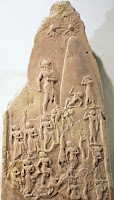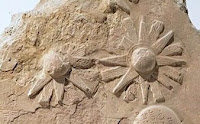The Victory Stele of Naram-Sin
 |
| The Victory Stele of Naram-Sin |
Other Figures in the Stele
 |
| Lullubi King Satuni |
 |
| Stars in the Victory Stele of Naram-Sin |
Victory Steles as Political Propaganda
 |
| Akkad King Naram-Sin |
 |
| Akkad Troops following Naram-Sin |
Where were they located?
 |
| Mother Goddess Ishtar |
The Victory Stele of Naram-Sin
 Reviewed by Articonog
on
January 03, 2020
Rating:
Reviewed by Articonog
on
January 03, 2020
Rating:
 Reviewed by Articonog
on
January 03, 2020
Rating:
Reviewed by Articonog
on
January 03, 2020
Rating:





No comments: